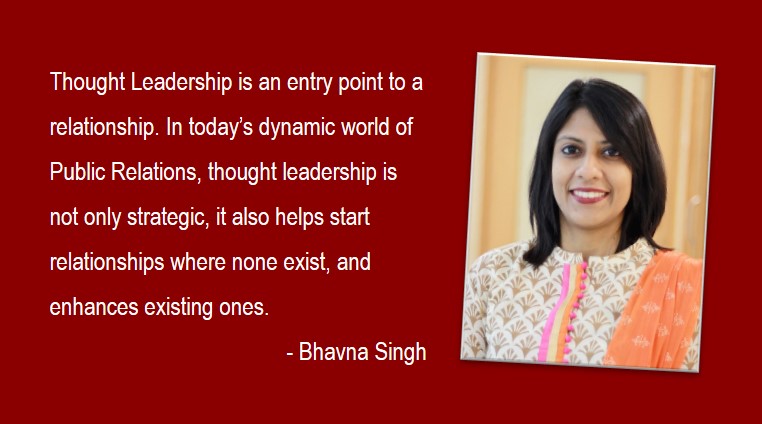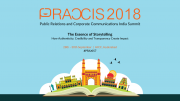It is said that a thought leader is someone who creates something before people realise that they need it. And because thought leadership has become so popular lately, many are under the mistaken assumption that it comes about on its own. It doesn’t. It takes a combination of several elements – knowledge, investment of time and energy and drive to build a reputation and more importantly earn the respect of your audience.
Thought Leadership, therefore, becomes an entry point to a relationship. Especially in today’s dynamic world of PR, thought leadership is not only strategic, it helps to start a relationship where none exists, and enhances existing ones.
As a thought leader, one must remember two simple rules.
Rule #1 – Never call yourself a thought leader. Its credible if others call you one, and
Rule #2 – There are no completely new ideas, but the thought leader expands on what is, grasps the moment and strikes when the iron is hot!
Here are a few suggested steps that can boost a Thought Leadership Strategy with Public Relations:
Be Accessible: People need to know that you can be approached. Hence, leave the lines open for journalists, bloggers, and even industry event organisers to contact you. Like I said, learn to start relationships and nurture them. Be prepared to engage and communicate. And open yourself to training. It is not enough to be insightful and knowledgeable, it is important to know the ways of communicating the knowledge and breaking them down into sizeable relevant portions for your target audience.
Be Collaborative: It is important for a thought leader to be collaborative with others in your industry. Whether it’s a blog post, eBook, or speaking engagement, collaboration is a key way to boost your thought leadership.
Be Generous and Humble: Michael Brenner, CEO of Marketing Insider Group — among other thought leadership-level achievements — is one of the foremost experts of this “give to get” ideology. Instead of self-promotion, Brenner encourages others to become “an authority on relevant topics by delivering the answers to the biggest questions on the minds of your target audience.”
Humility is a sign of intelligence. While there is lots that one knows, there is much more that one is ignorant about. An easy way is to stick to what you know best.
Be Choosy: Pick your speaking engagements wisely as they will later define your thought leadership abilities. Take a few of your best written pieces and transform them into a framework for speaking.
Be Content Driven: Make it a part of your PR strategy to regularly and consistently promote your published content. Use social media posts, PR campaigns, and your public events to talk about the content you’ve created and encourage your audience to check it out.
Keep creating various forms of content- whether it’s a blog post, infographic, eBook, or video, studies show that the more a brand blogs per month, the more traffic the company sees on its website. In particular, the study found that when a brand blogs 16 or more times per month, it receives 3.5 times more traffic than companies who blog only 0-4 times per month.
Be a Guest Author: By-lines are like fuel to your PR engine. So write Guest Posts, but strategically. Use the appropriate media vehicle and choose the right timing and topic. This way you will ride on the wave of your recent news and will be an easy recall in the minds of your audience. Try to stick to your area of expertise.
Be Research Driven: Research throw insights into several topics. Well-researched data can be shared with media and written and discussed, in order to strengthen your position as a thought leader. It could become food for thought for bloggers, young researchers, students etc.
Be the Leader: It is important to walk the talk. The leadership part requires action. Don’t stay away from the action. Leverage your knowledge and expertise and get right into the thick of things.
The views expressed here are that of the author and do not necessarily reflect that of Reputation Today.







Be the first to comment on "Thought Leadership & Public Relations"